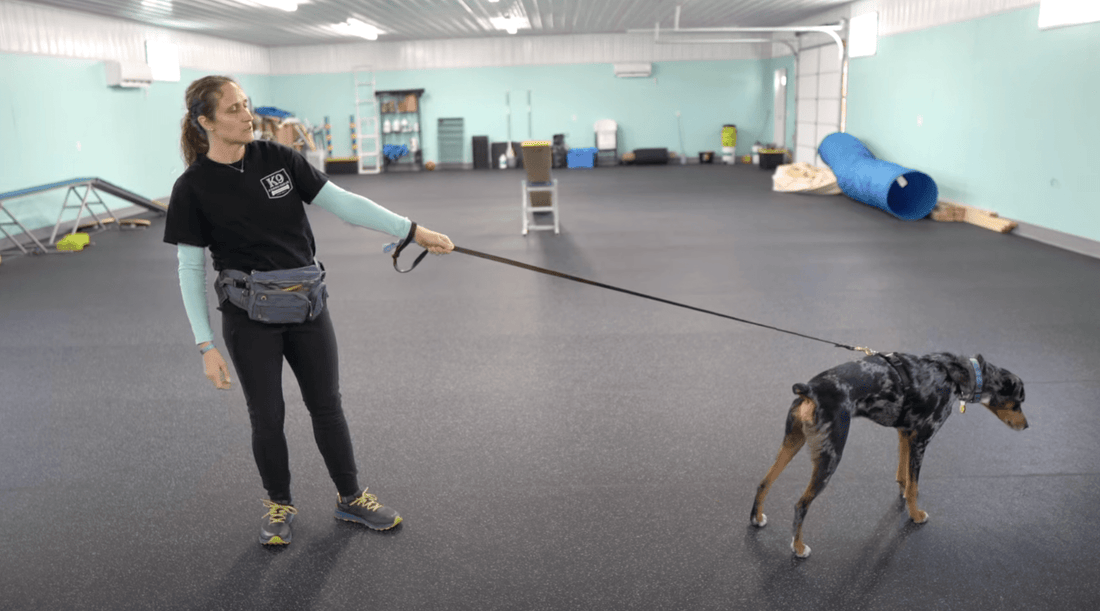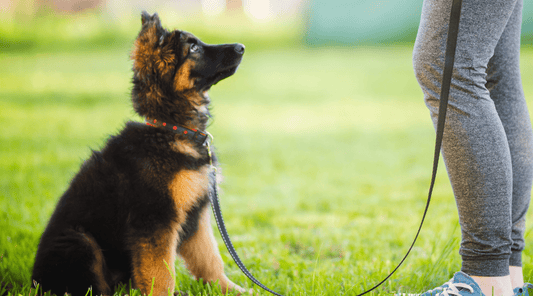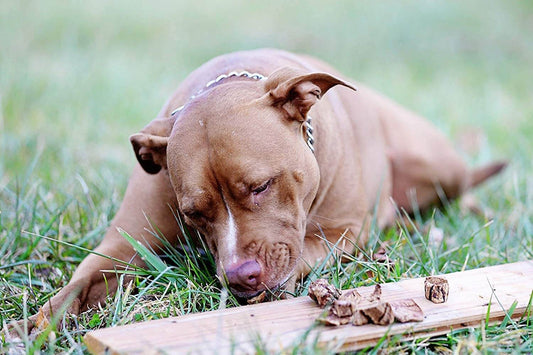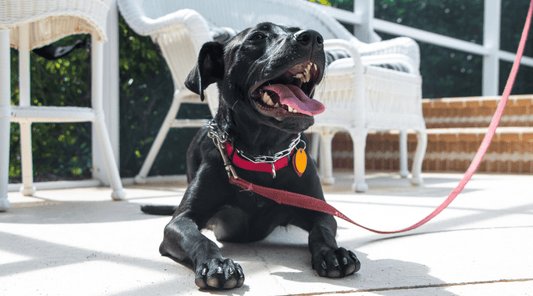
How to Train a Dog to Walk on a Leash
Dawn Miller Feb 18, 20256 Minute ReadKnowing how to train a dog on a leash isn't as simple as attach and go. Resistance is a very natural reaction to restraint. And depending on their size compared to yours, they may be impossible to manage. But with proper leash training, you can teach a dog to walk on a leash without pulling.
The other day, while leaving the dog spa, I noticed another dog mom, on the petite side, barreling down the sidewalk toward the spa. Her XL-sized dog was nearly carrying her, and the dog mom was in a near run to keep up.
In this instance, that leash was a tool the dog used to control the dog parent and not vice versa.
Why Leash Training Is So Important
Whether your pup is in a higher weight class than you or not, it's important to maintain control when a dog is on a leash. Proper leash training prevents pulling and possible injury—for you, your dog, and others. It allows you to maintain control during dangerous situations and makes going for walks a more enjoyable activity.
How to Train a Dog to Walk on a Leash
1. Consider How You'll Attach the Leash
A front chest harness attachment gives you more control over a large or muscular dog. Amanda demonstrates this in her leashing strategy video.
2. Learn to Hold a Leash Correctly
If you have a small to medium dog like my terrier Pixie, you may be comfortable with a loose wrist loop. But if you have a larger or muscular dog, looping the leash strap around your wrist and hand can give you the extra control you need to manage the dog.
Amanda demonstrates how to hold a leash when walking a large dog in this video:
3. Let Them Examine The Leash and Harness
Dogs are naturally curious about new objects in their environment. They deserve an opportunity to examine the object before it's attached to them.
Lay a new collar, harness, and/or leash on the floor in a neutral location in your home. Or just hold it and let them sniff it. Now, they know it "doesn't bite". Reinforce this exploration with a tasty treat.
This only takes a minute or two. And you're ready to proceed.
4. Introduce the Concept of a Leash and Harness Indoors
Next, allow them to wear their harness (if using) and then harness and leash indoors for short periods. Keep a palm full of treats. Guide them around the room with the leash, giving them a treat as they come with you.
If they pull, wait until there is slack in the leash, and reward. Reward your dog when they stay at your side.
If your dog knows game commands, interact with it while on leash with the "find it" or "get it" command.
In this video, Amanda shows you how to teach a dog find it.:
Whether giving treats, praise, or attention, you're helping them associate positive experiences with walking on a leash. This is positive reinforcement training.
Walk together, room to room.
Encourage them to follow your lead by using a cheerful voice and offering treats. This sets the foundation for good leash manners.
5. Teach 'Heel' or 'Let's Go'
Choosing one of these two commands can communicate when it's time to start moving at your side.
In case you were curious like I was, "heel" gets its name from the fact that a leash-trained dog is supposed to try to keep its front paws right behind your heels when walking.
Dogs can learn as many as 120 commands. Combining one of these commands with other physical, voice, and positive reinforcement cues eliminates ambiguity. Your dog begins to understand exactly what you want them to do when on a leash.
Use your chosen cue consistently. Reward them with a treat. If your dog starts to pull on their leash, state the command word. Reward them when they stop pulling and fall in beside you.
6. Teach "Leave It", "Sit", or "Down"
Your dog needs to know at least one of these commands before they can safely walk on a leash.
They have slightly different meanings. But each can generally stop a dog when they pull or run after a distraction.
7. Stop and Wait
If your dog begins to pull, stop walking and stand still. Wait until the leash slackens, either because your dog stops pulling or turns back to you.
Once the leash is slack, resume walking. This teaches your dog that pulling wrecks the fun (the walk), while a loose leash allows it to keep moving.
Amanda demonstrates how to stop leash pulling here.
8. Change Direction
When your dog starts to pull ahead, change direction by turning 180 degrees and walking the other way. This encourages your dog to pay attention to your movements and discourages pulling.
I'm getting so excited for you and your dog now. As your dog practices following your lead, the two of you will be able to move as a single unit. Walks will become effortless, even in distracting environments.
9. Take It Outside
Next, it's time to take this to an area with more distractions, like a park with children. Continue using commands, redirecting as needed, and rewarding them when they stay at your side with a slack leash as you walk.
10. Practice Patience
Leash training requires time and patience. Keep training sessions short and end on a positive note. Celebrate small victories and gradually increase the duration of your walks as your dog improves. Give your dog a meaty dog bone to acknowledge their hard work.
Choosing the Right Equipment
Best Leash for Training Dogs
Choose a standard 6-foot leash for training. This gives them enough freedom to explore without allowing too much distance.
Avoid retractable leashes during training. They can encourage pulling.
I'm partial to the standard high-quality leash with a wrist strap. This one on Amazon has an extra handle halfway down the leash, which gives you the flexibility to provide a dog with more or less slack during training. With 4.5 stars and over 5000 reviews, people really seem to like it.
Best Harnesses for Leash Training
Compared to a collar, a harness dramatically improves control, allowing even a petite person to manage a much larger dog through side leverage when they try to plow forward.
A front-clip harness can help reduce pulling by redirecting your dog's momentum toward you when they try to surge ahead. Ensure the harness fits snugly but comfortably.
Top harnesses are generally not a great idea because you might be tempted to pull a dog up from behind, especially if they're lightweight. This can dislocate a shoulder if you're not gentle.
With over 24,000 reviews and 4.5 stars, this reflective harness is a crowd favorite.
Best High-Value Dog Treats
Now, I'm going to share a secret. Get irresistible dog treats. They are a great way to train a dog to walk on a leash fast.
These grass-fed beef, single-ingredient dog treats and dog bones help me communicate expectations and train a dog on a basic command in as little as one session.
Are you curious about what your dog is capable of? I encourage you to check out the Free 7-Day Dog Training Challenge.
Available On:





